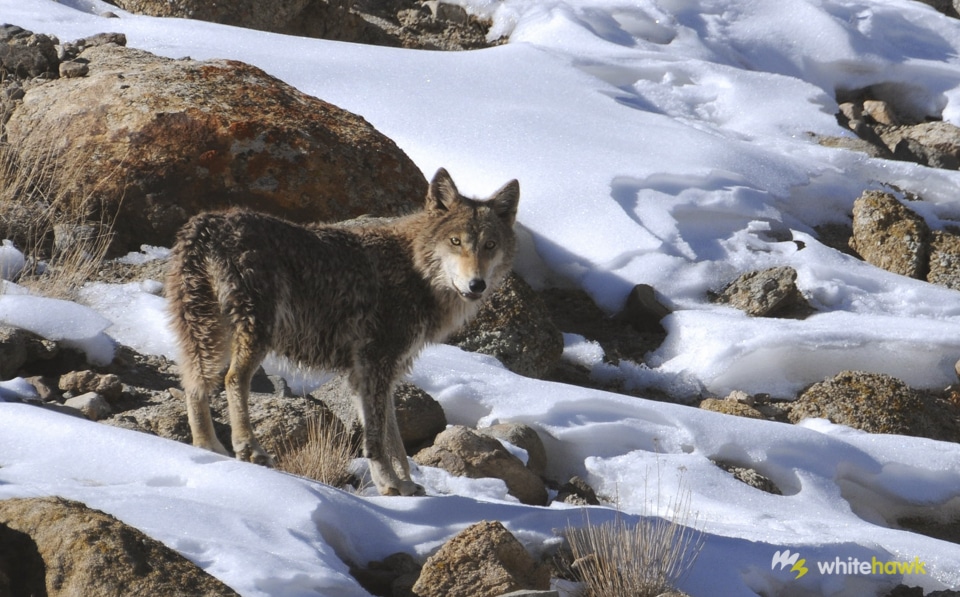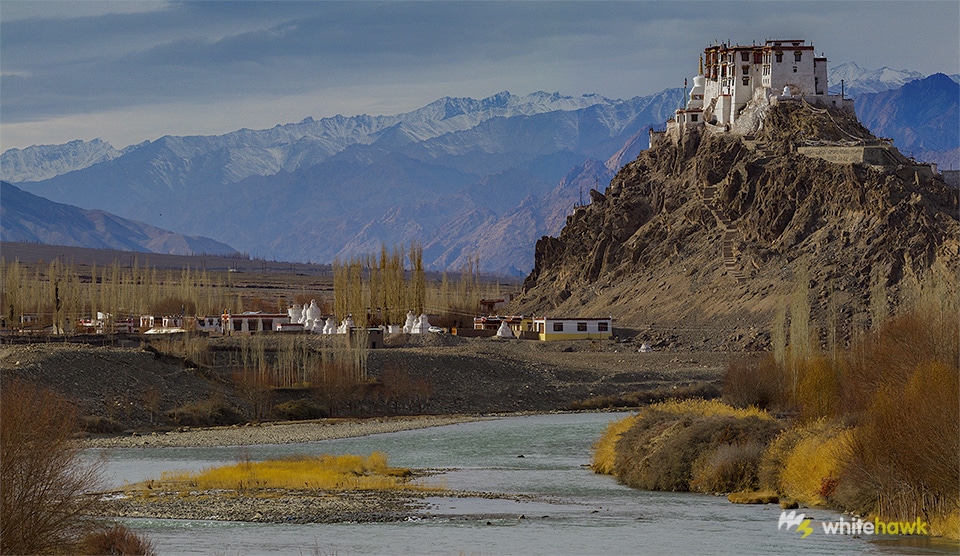
Our Snow Leopard Himalayas tour to Hemis National Park began in Leh, India. Leh is a beautiful town filled with monasteries, prayer wheels, artisan stores, good restaurants and some of the friendliest people you could ever hope to meet. After a couple of days here to adjust to the high altitude of Ladakh, we were ready to begin the trekking part of our tour in Hemis National Park. This park is a refuge for Himalayan wildlife. It is home to one of the most beautiful and hard to see wild felines, the Snow Leopard (Panthera uncia).
Exploring Hemis National Park
On our third morning, after a hearty breakfast, our local guides and expert trackers helped us pile ourselves and our gear into the vehicle. Together we made our way to the park. We drove past winding rivers and bridges adorned with prayer flags, small Buddhist villages, and stunning mountain views. After a little over an hour (with some stops to take advantage of some spectacular photo opportunities) we made it to the park entrance. We would walk from here.
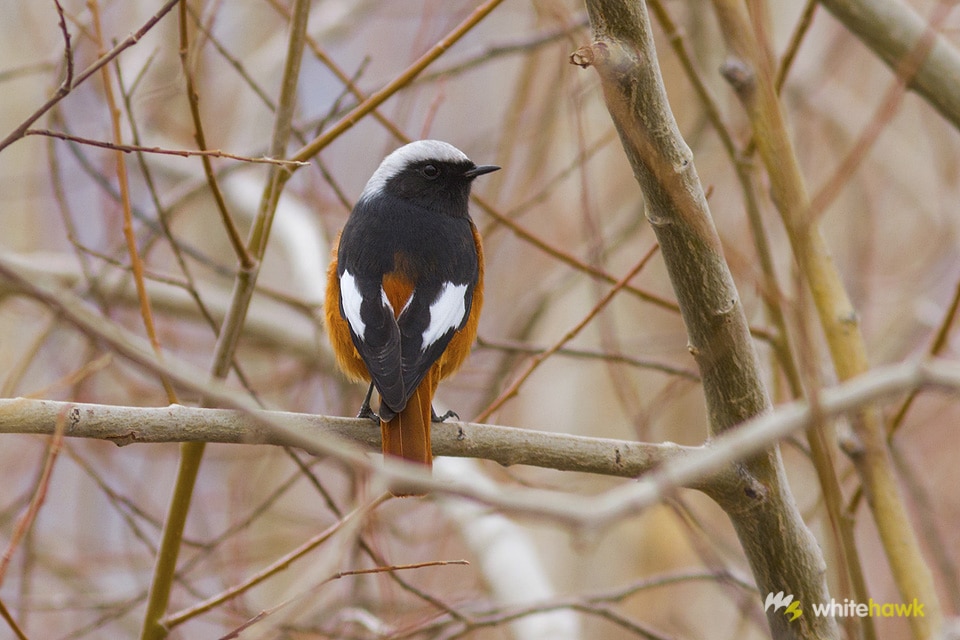
After unloading our gear from the car, we were met by a local, whose horses would help carry our luggage to camp. The horses wore metal bells around their necks to make it easier for their owner to find them. These bells, which all ring at different pitches, made a hauntingly lovely chorus as the horses walked. This melodic music was our soundtrack as we began to hike deeper into the park.
Partially frozen rivers gave way to sharp, jutting mountains – the distant ones covered in blankets of snow. The sun and the effort of hiking staved off the cold and allowed us to really enjoy the stark but breathtakingly beautiful scenery.
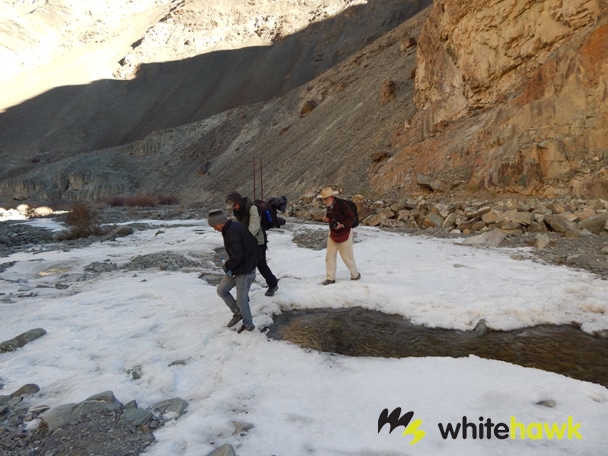
Barren Land Birds
Our group walked particularly slowly since we often stopped to look at a number of birds along the way. These included Brown Accentor (Prunella fulvescens), Robin Accentor (Prunella rubeculoides), White-browed Tit Warbler (Leptopoecile sophiae), White-capped Redstart (Chaimarrornis leucocephalus), Bearded Vulture (Gypaetus barbatus), and Himalayan Griffon (Gyps himalayensis) to name a few. After a couple of hours, we made it to base camp.
Once again, colorful prayer flags decorated the camp. A river that ran by our camp was frozen on top but clear water cascaded and flowed beneath the ice. There we met the other trackers and our wonderful chef – Kunga – who amazed us with the delicious and plentiful international meals he prepared for us – including pizza cooked in a pot over an open flame one night!
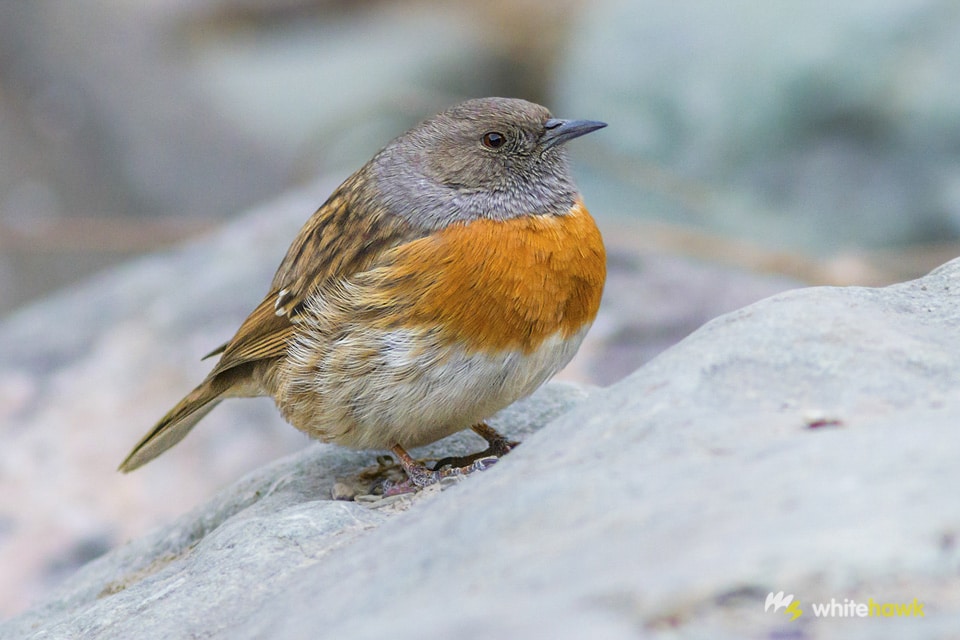
Wolves of the Himalayas
That evening, as Stanzin and Gyalson, two of the trackers, went to look for signs of Snow Leopards. We settled into what would be our home for the next 9 days. As the sun was setting, we spotted movement on one of the ridges above us. With a closer look through binoculars, we saw that it was a wolf!
We watched, mesmerized, as it climbed to the top of the ridge and sat. It appeared to be watching us as intently as we were watching it. It stayed that way for a good 5-10 minutes. We all had amazing looks at it through the scope. The wolf then rose again and trotted off into the darkening sky. It was a wonderful and auspicious start to our Snow Leopard tour in Hemis National Park.
